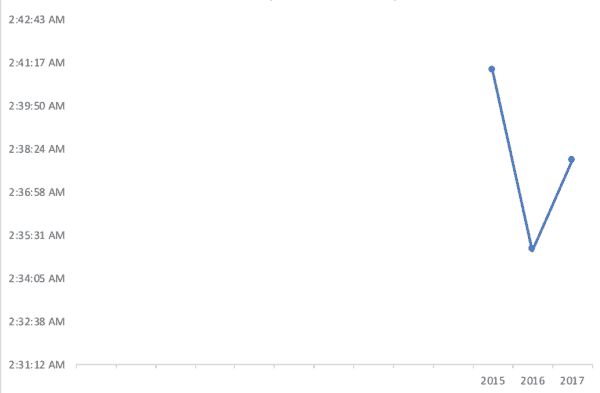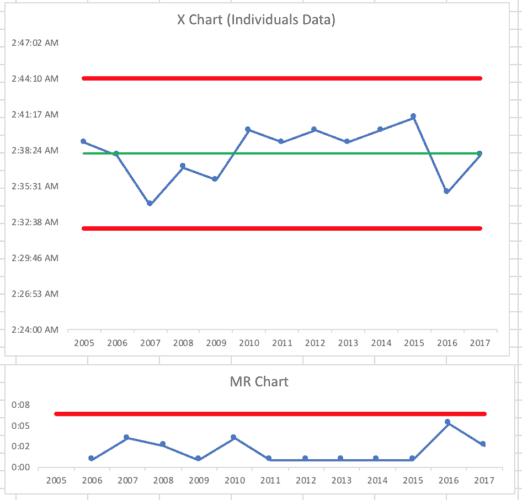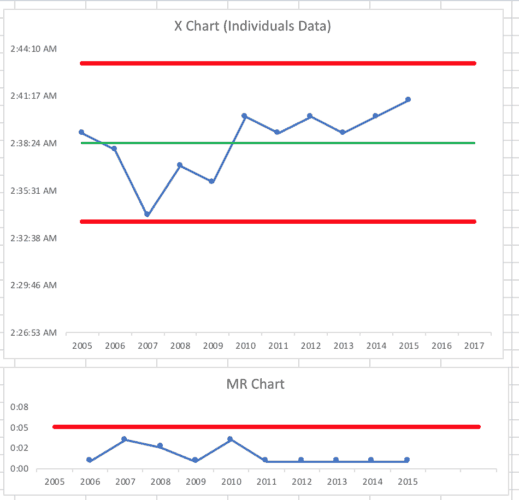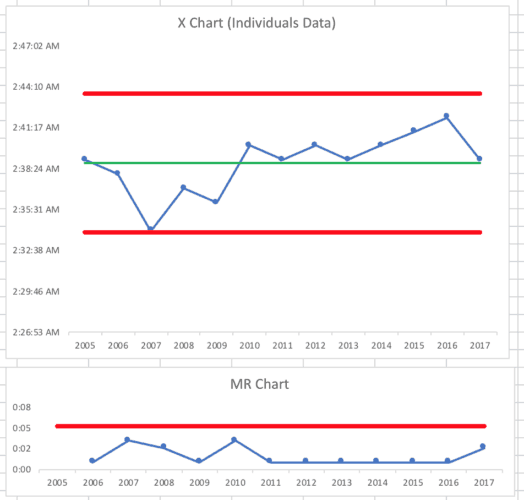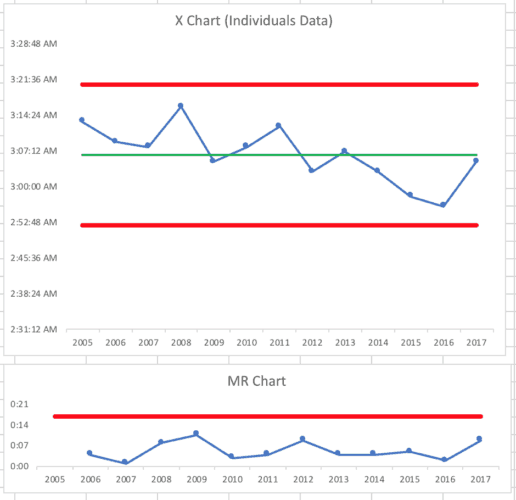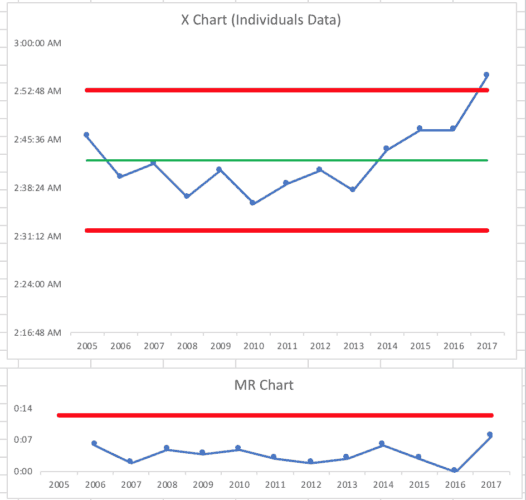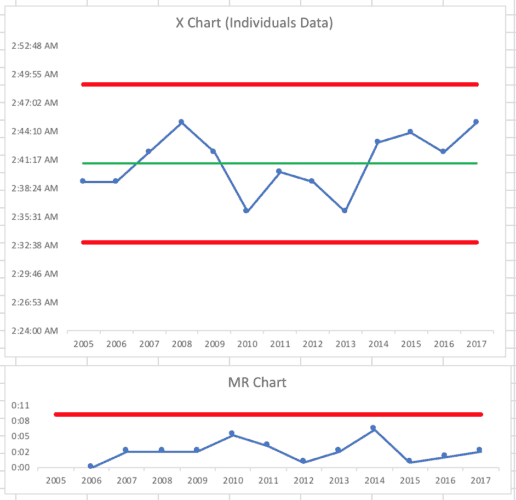The other day, I saw an article about baseball's continued quest to shorten the length of games. The main focus is on the length of Major League Baseball games, although I'm not sure shortening games will attract newer, younger fans — it might just alienate the older, existing fans.
Minor League Baseball Expands Pace-of-Play Rules
The minor leagues are often used as a lower-risk model cell, or pilot area, for rules that eventually make their way to the majors.
Last season, MLB instituted an instant intentional walk, which sends a batter to first on a manager's signal instead of having to throw four pitches intentionally wide of the plate. This reduces some time but also eliminates some of the crazy things that happen occasionally, such as a batter swinging at one of those pitches and getting a hit:
I guess reducing the length of games is good, but reducing some of the variation in what happens on the field isn't necessarily good for the fan either, is it?
This season, MLB is reducing the number of trips to the mound or conferences that can take place on the mound each game, again in the attempt to speed up games by reducing delays.
The minor leagues have been experimenting with the use of a pitch clock that's meant to speed play by reducing the delay between pitches. I blogged last year about how this was confusing to me as a fan, since I didn't understand why and when the pitch clock was used or not used:
A Confusing Rule That Seemed to Not Be Enforced: Minor League Baseball's Pitch Clock
The pitch clock is being shortened from 20 seconds to 15, although the Florida State League (where I attended a game last year) was using the 15 second clock.
“…the pitch clock that began at Class AAA and Class AA in 2015 will be lowered from 20 seconds to 15 when there are no runners on base, the National Association of Professional Baseball Leagues said Wednesday. The timer will remain at 20 seconds with runners on.”
As I posted on LinkedIn the other day, the article included some length-of-game data from the Florida State League, but it was only three data points, which isn't very helpful.
“The Class A Florida State League experimented with a 15-second pitch clock in all situations the past two years, and its average time for a nine-inning game dropped from 2:41 in 2015 to 2:35 the following season before rising to 2:38 last year.”
With just three data points, we don't know how much the game length normally varies from year to year. The length of game average could just be fluctuating and could have nothing to do with the pitch clock.
Lesson learned: If presented with just two or three data points at work, ask people to #PlotTheDots so you can make better decisions and better evaluate changes you're making to the process.
If we plot just three dots, we get this chart:
The length of game went down with the new rule. Then, it went back up a bit. Games were still shorter in 2017 compared to 2015. But, it begs the question of whether a few minutes here or there is a signal of a meaningful change or if it's noise in the data.
I emailed the Florida State League office and, like last year, they were very helpful with a quick response, sharing data for their league (and others) going back to 2005. See the spreadsheet they shared with me (Excel or Google Sheets). Note that the years go from right-to-left in the file.
The Florida State League games (2:38) were shorter than any other league. The AA Eastern League had an average 2:42 (using a 20-second clock). Leagues without a pitch clock had averages that ranged from 2:45 (Rookie-level Gulf Coast League) to 3:05 (the AAA Mexican League).
I used the data provided by the Florida State League to create a Process Behavior Chart that would better show trends over time. You can see my Excel spreadsheet and here is the chart, below.
Using all of the data points as the baseline for the average, as well as the upper and lower limits, I don't see any sign of a signal. It looks like what you might call a stable and predictable system over time.
There are no single data points above or below the calculated limits.
We have six consecutive data points above the average, but that's not a signal. A run of eight or more data points on the same side of the average would be a signal.
We also don't see 3 of 4 (or 4 out of 4) consecutive points closer to the same limit than the average.
All of these data points look like noise in the system.
What Might Have Happened Without the Pitch Clock?
However, it could be that the pitch clock intervention in 2016 prevented what would have been a signal.
If we look at a Process Behavior Chart for the years 2005 to 2015, it looks like the chart below. It's a stable and predictable system and the limits tell us that 2016 to 2017 times would have been between 2:33 and 2:43 unless something changed in the system.
We know there was a system change… but the question is, “Did it make a significant impact on the pace of play and the length of games?”
Let's assume that, without the pitch clock, the average game times for 2016 and 2017 were 2:42 and 2:39 (those are made up numbers).
The Process Behavior Chart would then have looked like the chart below and we'd see eight consecutive points above the average. We'd ask, “What changed in 2010 that caused the average length of game to go up?”
Did the change to the 15-second pitch clock make a difference? It's possible, but the Process Behavior Chart with the actual game times doesn't really prove it to be so… at least yet.
Since the rules for evaluating a Process Behavior Chart require eight consecutive data points below the baseline average to prove a shift in performance, we wouldn't know for sure until after the 2023 season when we might see the eighth consecutive year with an average time under the chart's average of 2:38.
In a workplace, using a daily or weekly metric allows us to see eight data points much more quickly, which is one reason to prefer faster metrics instead of monthly metrics.
Either way, it's just a few minutes in the baseball games.. The times for the last two seasons could well possibly be well within the range of “noise in the system.”
Mexican League
What if I chart one of the leagues that haven't used the pitch clock? What about the slower-paced Mexican League?
It looks like a stable and predictable system. The Process Behavior Chart methodology would say there's no evidence of change, even if a linear trend line would (perhaps incorrectly) imply games are getting faster.
Pioneer League
Looking at the Pioneer League, the chart tells us it's not a stable and predictable system.
We see eight data points below the average and 2017's time was above the upper natural process limit, which is indicative of a change in the system. It would be appropriate to ask, “Why were Pioneer League games slower in 2017?).
South Atlantic League
The South Atlantic League‘s chart shows something different — it looks like a stable and predictable system.
Are minor league games taking longer? Well, yes and no, depending on the league.
My next book, Measures of Success, is about the use of this Process Behavior Chart methodology in the workplace, as applied to our performance measures.
Thanks again to the Florida State League office for so kindly (and quickly) responding to my inquiry.
What do you think? Please scroll down (or click) to post a comment. Or please share the post with your thoughts on LinkedIn – and follow me or connect with me there.
Did you like this post? Make sure you don't miss a post or podcast — Subscribe to get notified about posts via email daily or weekly.
Check out my latest book, The Mistakes That Make Us: Cultivating a Culture of Learning and Innovation:



